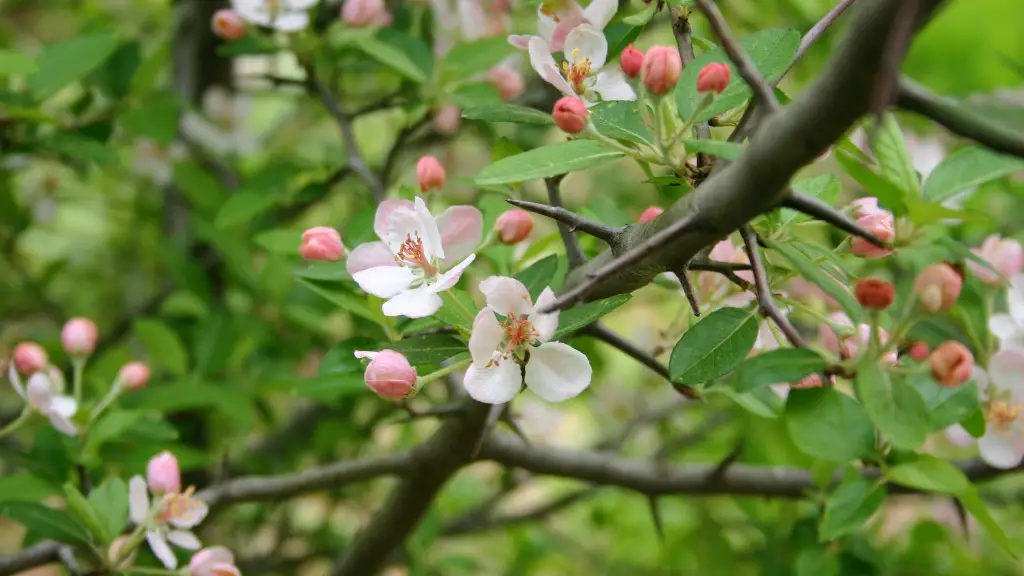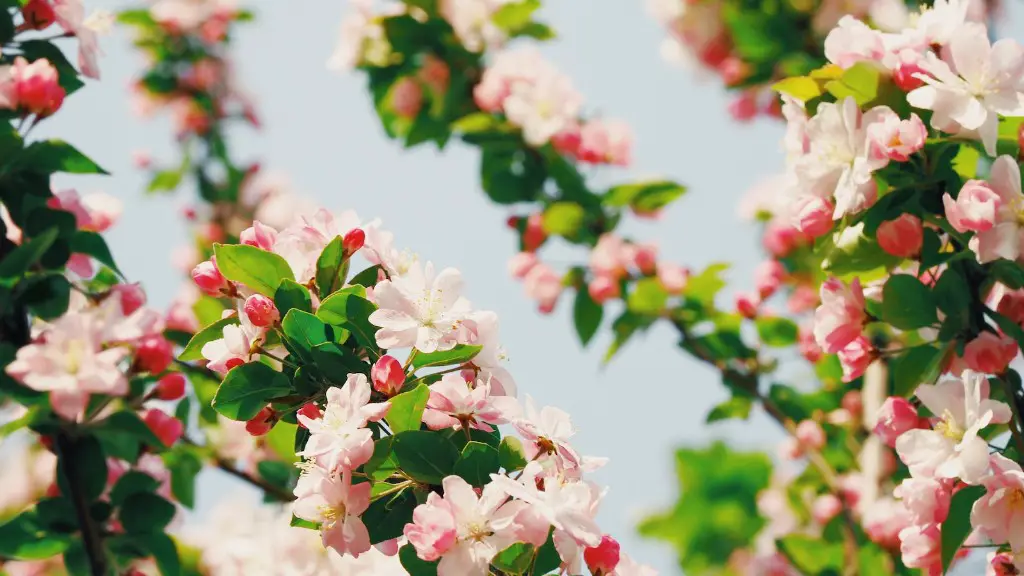Choosing an apple tree to grow can be a daunting task. Here are some tips to consider before making your selection. Firstly, it’s important to think about which varieties of apples you enjoy eating – this will help narrow down your search for the perfect tree. Consider not just the types of apples you enjoy, but also their color, texture, taste and juiciness. Secondly, think about the climate of the area you plan to grow the tree in. Apples need cold winters and hot summers to do well, so try to match the climate of your location as closely as possible to the varieties of apples you like. Thirdly, consider how much space you have available for the tree – some varieties can reach heights of up to 30 feet while others’ mature heights are much lower. Fourthly, survey the area and note the position of trees and shrubs that get any sunlight, as apples need a minimum of six hours direct sunlight each day. Fifthly, pay attention to the soil – if possible, analyze soil samples to make sure you have the right pH balance and nutrients for healthy apple tree growth. Sixthly, make sure the tree you choose is resistant to local apple tree pests, such as aphids and borers, so that you can protect it from unnecessary damage. Last but not least, try to pick a variety of apple tree that matches the rest of your garden. Ultimately, when deciding which apple tree to grow, you should take into account all of these factors.
Location
The location of your apple tree can have a large impact on its growth. Different apple varieties can thrive in different climates, so it’s important to make sure the location you choose for your tree is suitable for the variety you’re growing. Consider the weather and the soil type in the area and make sure that your chosen variety can tolerate those conditions. Also, make sure that the area gets enough sun – most apple trees require at least six hours of direct sunlight a day.
Size and Shape
When selecting an apple tree, think carefully about its size and shape. Most apple trees can reach heights of up to 30 feet, but there are smaller varieties available, so make sure to pick one that will fit in the space you have available. Additionally, consider the shape of the tree – some trees can be pruned to grow in an oval shape or a column shape, so pick the shape that best suits your garden.
Pests and Diseases
Apple trees are vulnerable to pests and diseases, so it’s important to select a variety that is resistant to the most common diseases in your area, such as apple scab and fire blight. Additionally, many apple tree varieties can suffer from aphid infestations and borers, so make sure to pick a variety that is resistant to those pests. Lastly, be sure to regularly inspect your apple tree for signs of disease or pests and take action immediately if you notice any.
Fruit Quality
When choosing an apple tree, it’s important to consider the quality of the fruit that it produces. Different varieties of apples have different flavors, textures and colors, so make sure to find a variety that produces fruit that you will enjoy eating. Pay attention to the size of the apples produced by the tree, as well as their flavor, aroma and juiciness.
Rootstock
Rootstock is an important factor to consider when selecting an apple tree. Different rootstocks can cause apple trees to grow differently – some will produce larger fruits, while others will allow the tree to grow in a more compact shape. Additionally, rootstocks can have an impact on the hardiness of the tree, so it’s important to pick a rootstock that is appropriate for your location and climate.
Appearance
The appearance of an apple tree can greatly impact the look of your garden, so it’s important to pick a variety that fits in with the rest of your plants. Compare the color of the bark and the size of the leaves to the existing plants in your garden, and make sure to pick a tree with a size, shape and color that fits in with your landscape.
Cost
While cost shouldn’t be the main factor in picking an apple tree, it is still important to consider. Apple trees can range in price from $20 for a small grafted tree, to hundreds of dollars for a larger, more complex tree. Make sure to compare prices and pick a tree that fits within your budget.


